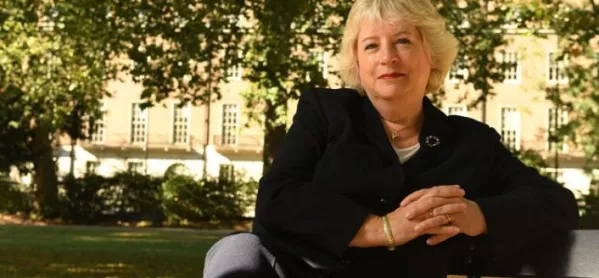- Home
- Exclusive: Just 35% of Chartered College full members
Exclusive: Just 35% of Chartered College full members

Just a third of the Chartered College of Teaching’s membership are full teacher members, Tes can reveal.
And more than half of the professional body’s membership do not pay any fees at all because they are student members.
The figures are blow to the college’s aim of being a “massive” organisation for grassroots teachers. They will also add to questions over the organisation’s sustainability, with Tes revealing last month that it remains heavily reliant on funding from the Department for Education and faces a tall order to hit its target for membership growth.
Need to know: Chartered College of Teaching
Investigation: Does the Chartered College have a future?
Dame Alison Peacock: Chartered College has to be ‘massive’
According to figures shared by the college, the body had a total membership of 26,469 when it last reported this figure to the DfE at the end of quarter 1 of this financial year (the end of June).
However, Tes obtained a breakdown of these figures, showing that only 9,378 were “full members” - the category for teachers in early years, primary, middle, secondary and further education. This represents 35 per cent of the total membership.
The college has 1,162 members who are classed as “professional affiliates” - a category for non-teachers available to those who work “alongside teachers and leaders in an early years setting, school, college or higher education institution as well as not for profit organisations”.
‘Raising the status of teaching’
A further 456 are “fellows” - a membership category open to teachers with a minimum of 10 years’ experience, which requires nomination.
All of these membership categories are fee-paying. However, the College’s remaining 15,473 members are non-fee paying students, representing 58 per cent of the total membership.
A spokesman for the college said that July, August and September are an “active” time for the organisation, with students upgrading to full membership and student teachers joining. However, the college declined to share with Tes its conversion rate for turning students into full members.
The fact that full members make up a relatively small proportion of the college’s membership, and that the majority of members don’t pay fees, highlights the challenge the organisation faces in becoming financially self-sufficient.
The college still receives 40 per cent of its funding from the DfE. To hit its target of recruiting 40,000 members by March 2020, the college will have to increase its rate of recruitment by 1,400 per cent compared with the previous nine months.
The NASUWT teaching union said that the membership figures showed that the college is “failing to resonate” with teachers.
Chris Keates, the acting general secretary of the teaching union, said: “The NASUWT has never objected in principle to the creation of a dedicated professional body for teaching. In the right circumstances, with the right remit, such a body could have a useful role to play in the provision of professional development and training, commissioning high-quality research and sharing professional practice.
“However, it’s clear from the low membership figures that there continues to be a lack of clarity among teachers about the college’s aims and objectives and how it can enhance their working lives.
“The NASUWT’s own research found that 66 per cent of teachers said paying for membership of a College of Teaching would be a low priority in their monthly household budget.
“It is clear from this and the membership figures that the college, in its current form, is failing to resonate with the profession.”
In a statement, the college said: “The Chartered College of Teaching is for the whole teaching profession. That includes those student teachers training to enter our wonderful profession, those in the classroom and teachers moving into leadership.
“We believe that we are strongest when we work together and support the current and future generations of teachers. That is how we can ensure the strongest possible education for young people.
“Our student teacher members are becoming full members and benefiting from the tools and support we provide to deliver outstanding classroom practice. We are still a young organisation and have accomplished much in just two years.
“We encourage all teachers, no matter what stage in their career, to join us and raise the status of this profession.”
Keep reading for just £1 per month
You've reached your limit of free articles this month. Subscribe for £1 per month for three months and get:
- Unlimited access to all Tes magazine content
- Exclusive subscriber-only stories
- Award-winning email newsletters



